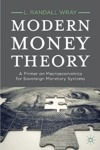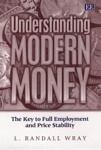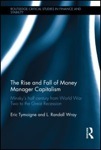By L. Randall Wray
To Fix or To Float, that is the question.
MMT argues that a sovereign government that issues its own “nonconvertible” currency cannot become insolvent in terms of its own currency. It cannot be forced into involuntary default on its obligations denominated in its own currency. It can “afford” to buy anything for sale that is priced in its own currency. It might be able to buy things for sale in foreign currency by offering up its own currency in exchange—but that is not certain.
If, instead, it promises to convert its currency at a fixed price to something else (gold, foreign currency) then it might not be able to keep that promise. Insolvency and involuntary default become possible.
Continue reading →



 In an earlier essay I suggested we just forget the 1%. This was an idea not entirely supported by the commentary that followed. On reflection, I’ve decided it isn’t the right approach after all. What we really need to do is rescue the 1%.
In an earlier essay I suggested we just forget the 1%. This was an idea not entirely supported by the commentary that followed. On reflection, I’ve decided it isn’t the right approach after all. What we really need to do is rescue the 1%.









